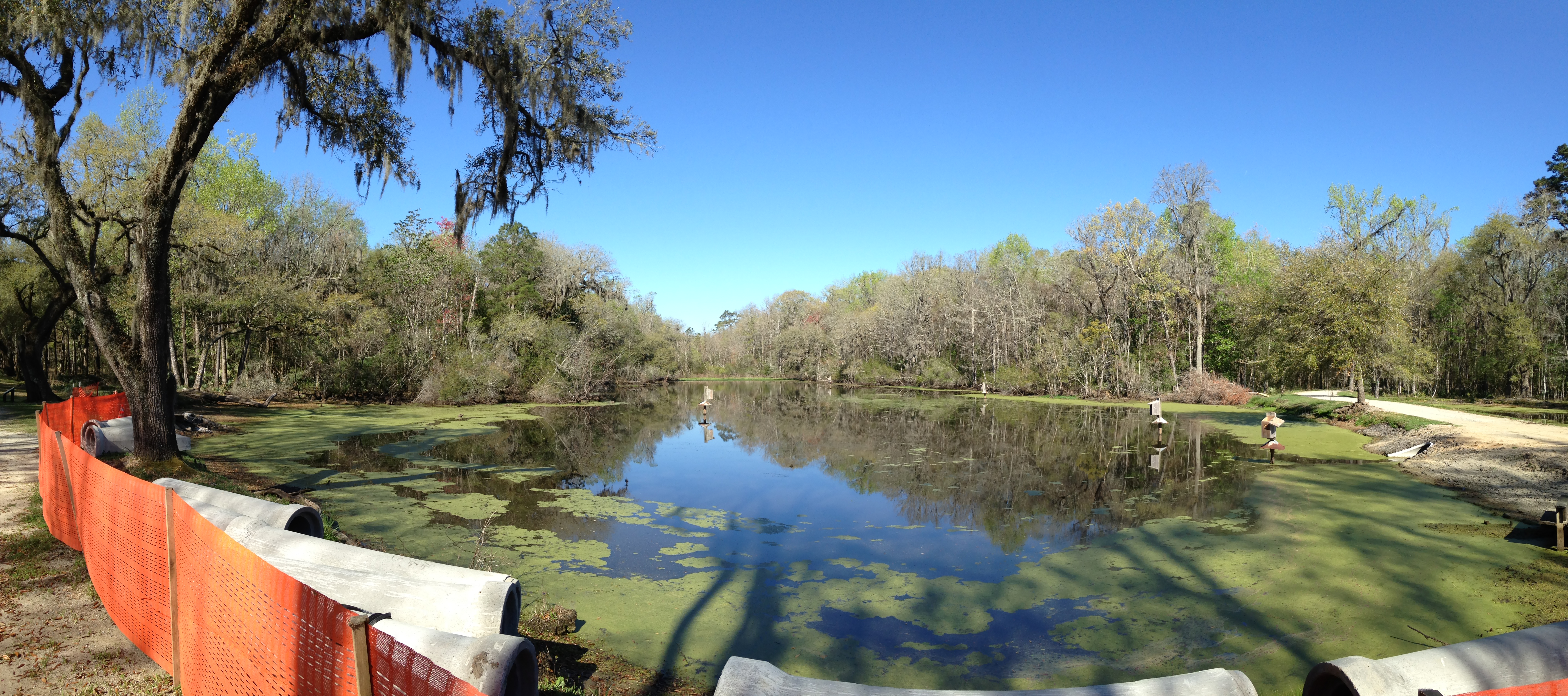Voted the Best Place to See by Condé Nast Traveler.

By Eric Becker, Manager of Landscapes, Horticulture, and Modern Facilities

In 2013, an initiative began to evaluate and produce management plans for the preservation and conservation of some of the historic rice fields and ponds on Drayton Hall property. Historically, rice production was likely occurring here sometime around the end of the 17th century. The use of the fields and ponds for this function continued until the redevelopment of the property by John Drayton in the 1740s. Over the years, maintenance and use of the entire pond system had greatly diminished and the natural environment crept back in, attempting to reclaim a long-lost ecosystem. Unfortunately, this system (shown above) was unhealthy, lacking in good water quality and control, overgrown and breeched impoundments, and infested with invasive aquatic and wetland plants.
Working with Folk Land Management, the Drayton Hall Preservation Trust evaluated and adopted a management plan for this historic system to re-establish the integrity and function of the impoundments; replace, add and increase the water flow capacity, pond depth and holding capacity; reduce and remove invasive plants; add habitat for colonial bird species while increasing the seasonal water surface and food sources for migrating waterfowl; and to better allow access and interpretive potential in the future (Phase II). Work on Phase I began in March of this year and finished in August; it was supported, in part, through funding from the US Fish & Wildlife Service, Ducks Unlimited, the Dominion Foundation and Gail and Parker Gilbert. The results of these partnerships speak for themselves in the images below.
With the challenge of the recent Hurricane Matthew, the system was not only put to the test, but finally provided the necessary water, assisting to refill the ponds. The impoundments held, and although overwhelmed by this major event, the water control systems functioned much better than last year’s more impactful flooding.